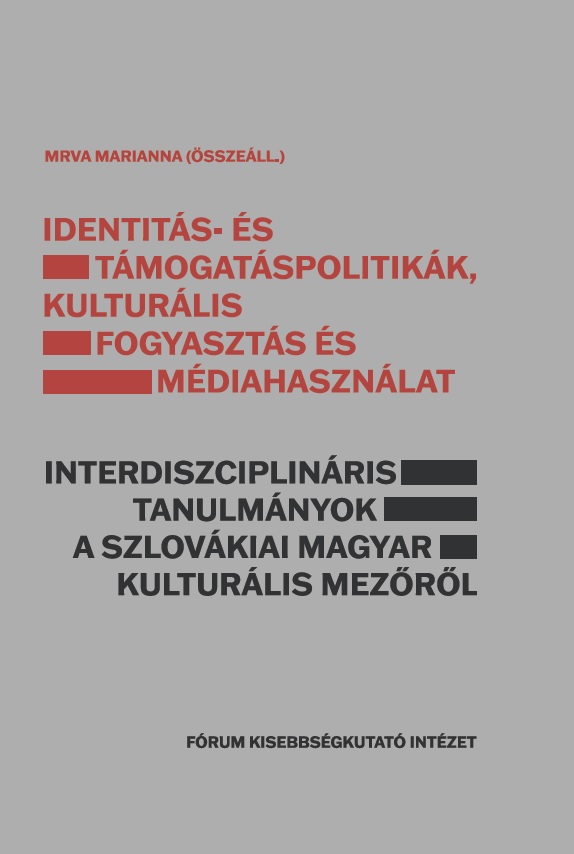A szlovákiai magyar kultúra állami támogatása
State Support for Hungarian Culture in Slovakia
Examination of the Minority Culture Fund Tenders (2018–2022)
Author(s): András Morauszki
Subject(s): Ethnic Minorities Studies, Politics and Identity
Published by: Fórum Kisebbségkutató Intézet
Keywords: Examination of the Minority Culture Fund Tenders (2018–2022)
Summary/Abstract: The Minority Culture Fund (KULT MINOR) was established in 2017 and has been supporting cultural activities of national minorities in Slovakia since 2018. The Fund is the central institution of the Slovak state's support for minorities and the main means by which the state fulfils its obligations as a signatory to international treaties on the protection of national minorities. Minority grants have been available in Slovakia through the Fund since 2018, earlier they had been awarded by the Ministry of Culture and the Government Office. The current system differs from the previous ones in several important respects: minorities have more influence on the functioning of the grant system in general and on decision-making within it than before, the yearly minimum contribution of the state to the Fund is set by law at a significantly higher level than before, and the proportions of the distribution of grants between national minorities are also fixed. However, there is more continuity in terms of the objectives supported, the applicants and the decision-making criteria. The study compares the composition of applicants, application activity and the distribution of grants during the period when grants were awarded by the Government Office and by the Minority Culture Fund, pointing out the changes brought about by the restructuring of the application system and the relative unchangedness of the awarding priorities. Based on the data published by the Minority Culture Fund, the study also examines the participation of Hungarian cultural institutions and individuals in the application process: the distribution of applicants and their applications, as well as the distribution of the requested and received support in terms of the purpose of the projects, the type of applicants, and the territorial distribution of all these. It then attempts to identify and characterise different, well-defined groups of applicants, again on the basis of the data available and the behaviour of applicants that can be inferred from this.
Book: Identitás- és támogatáspolitikák, kulturális fogyasztás és médiahasználat
- Page Range: 37-62
- Page Count: 26
- Publication Year: 2022
- Language: Hungarian
- Content File-PDF

